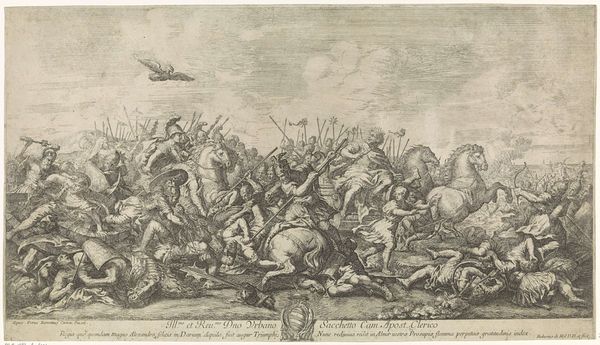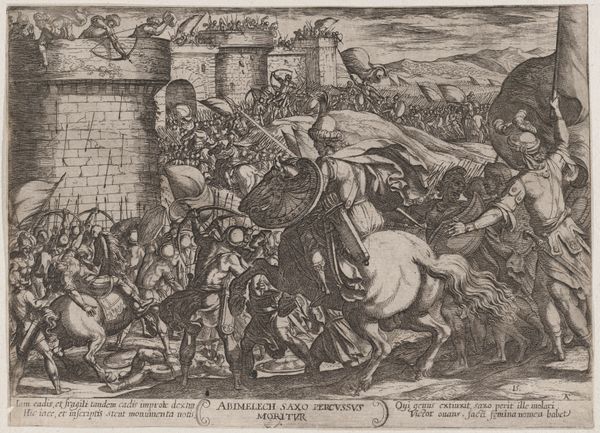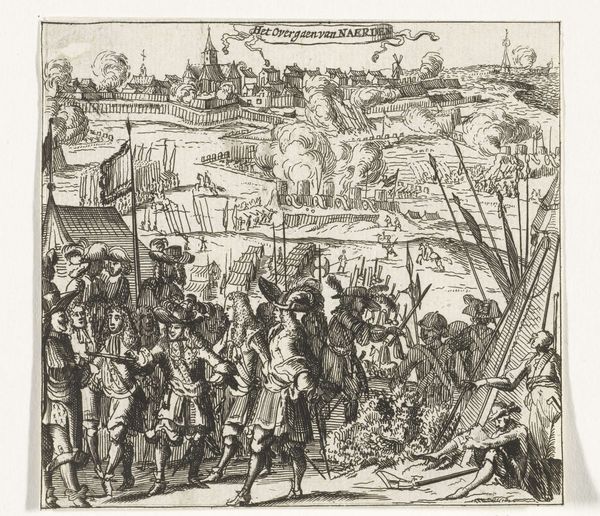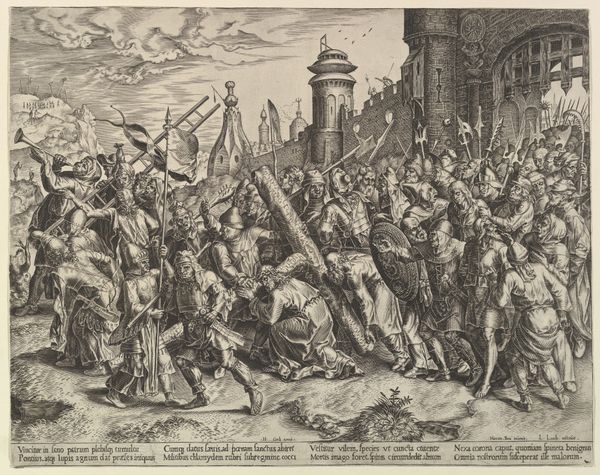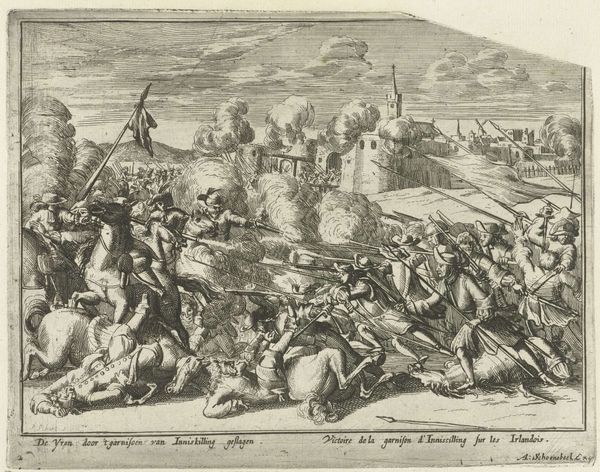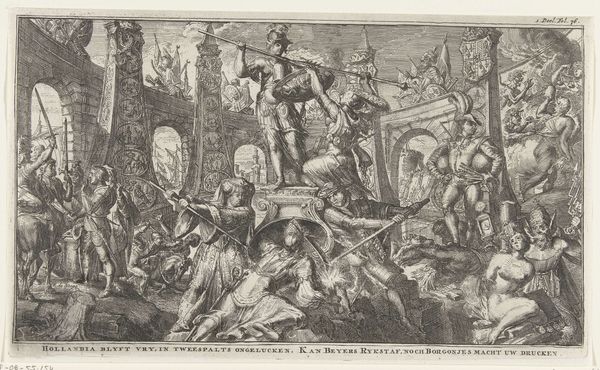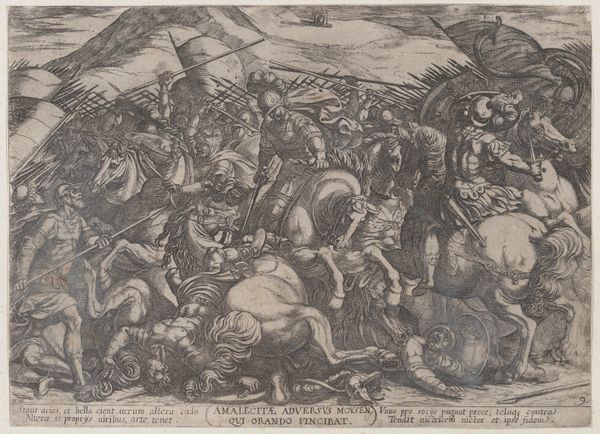
print, engraving
#
medieval
#
pen drawing
# print
#
figuration
#
romanesque
#
line
#
history-painting
#
engraving
Dimensions: height 136 mm, width 179 mm
Copyright: Rijks Museum: Open Domain
Curator: This engraving from 1572, titled "The Army of Romulus in Combat with the Sabines", comes to us from the hand of Giovanni Battista Fontana and is held in the Rijksmuseum. Editor: It’s incredibly dense! All these figures packed together, almost like a woven tapestry of violence. You immediately sense the chaotic nature of battle through Fontana’s line work. Curator: The sheer intensity is palpable, and it's fascinating how Fontana, through this history painting, visualizes the foundation myths of Rome itself, specifically Romulus trying to reclaim the Capitoline from the Sabines. It serves as a cultural artifact, reflecting the values and narratives the ruling classes wanted to project. Editor: Agreed, and consider the labor involved in an engraving like this. Each line carefully etched, translating a vision of power, perhaps, into a reproducible form. The material of the print allows it to circulate widely, disseminating a very particular version of history and ideal of masculine Roman virtue. It seems the pen, or rather, the burin, is as mighty as the sword here. Curator: Precisely, and it’s no coincidence that printmaking was becoming such a powerful tool in disseminating ideas and political narratives during the Renaissance. The ability to reproduce images and distribute them broadly changes the public sphere. I wonder what messages and power dynamics the choice to focus on this episode reinforced? Editor: Fontana isn't just creating art; he is also manufacturing consent or at least visually bolstering an existing ideology through his work, where materials, techniques, and circulation amplify it. Curator: The detail in the armor, the expressions, and the composition clearly showcase skill, so it served an important ideological function then, reinforcing classical ideals of leadership and Roman exceptionalism. Thank you for considering this aspect, it sheds additional light. Editor: Thinking about this as a designed object meant to deliver these ideals across society certainly helps us to get closer to understanding it.
Comments
No comments
Be the first to comment and join the conversation on the ultimate creative platform.
